Fireworks travel around Yangzhou in my memory in March
If
Again
I have a chance to meet
There is so much I want to ask
and so much I want to tell Japanese visual artist Otsuka Chiano
That year, when a friend asked me where I wanted to go on National Day, Yangzhou suddenly jumped out. "Fireworks under Yangzhou in March" is so close to me. That year was the Double Festival of 2009 (National Day and Mid-Autumn Festival), and I still remember the sound of the flute on the 24th Bridge on Slender West Lake under the bright moon. More than ten years have passed in a flash, and I will look back on the city in the most beautiful season.
Shuangdong Historical District geyuan East Gate Site slender West Lake Fuchun Tea House Heyuan Ancient Canal Water Sightseeing Wenchang Pavilion YangzhouEight Eccentrics Memorial Hall and Double Expo Hall (Yangzhou Museum and China Engraving and Printing Museum)
Yangzhou In ancient times, it was called Guangling, Jiangdu, and Weiyang. It was a quiet small city in Suzhong with breeze, drizzle, slanting willows, and moonlight. Compared with Yangzhou in ancient times, the style of "having a hundred thousand yuan around my waist and riding a crane down to Yangzhou" has faded, and the pomp of "dreaming of Yangzhou every ten years and winning the reputation of a brothel" has also been omitted. Read through the records of walking through the streets again to savor this graceful town.
Shuangdong Historical District: Dongguan Street and Dongquanmen are very charming old streets in Yangzhou. The street gathers Yangzhou's specialty snacks and time-honored shopping shops.



geyuan In the 23rd year of Jiaqing of the Qing Dynasty (AD 1818), Huang Zhiyun, the chief salt merchant of Lianghuai River, developed a residential garden based on the original Ming Dynasty's "Shouzhi Garden", with a bamboo viewing area in the north, a central garden and a residential area in the south.
It is named after the planting of green bamboos all over. The word "ge" in the name of the garden is taken from half of the word "bamboo", which should combine the various bamboos in the garden.
In addition, the rockery and stone stacking art with the title of the four seasons has its own characteristics: spring, summer, autumn and winter, which are composed of bamboo shoots, lake stones, yellowstone and Xuan stones.
Han Xuetang, is a place to receive guests. "Sinology" refers to the study of Confucian classics by scholars in the Han Dynasty, paying more attention to exegesis, verifying the system of names and objects, and having a very rigorous attitude towards academic research.
The couplet in the Han school "Stick to a few useful books and forget to eat, and cultivate a few new bamboo sticks to be like children and grandchildren", which means that reading a good book can make people forget to eat and sleep, and planting a few new bamboo sticks looks like children and grandchildren. It is said that it was written by Zheng Banqiao, and it expresses its owner's expectations for his children and grandchildren.



Qingsong Hall:"Ode to Qing" means "praising Qing", which means praising noble purity and praising the virtues of noble purity. Among the entire Huang family mansion, Qingsong Hall has the highest status and is more important than the building on East Road.QingmeitangHezhong Road ConstructionHan XuetangIt is the largest in size and the highest in specifications. It is the place where the Huang family gathers and receives distinguished guests, as well as important discussions and sacrifices.


The middle of the Four Seasons Garden in Geyuan is "Yiyuxuan", with three broad towers in the east and virtual windows on all sides, providing a panoramic view of the garden. The roof of the pavilion is made of black tiles common in Yangzhou, with the four corners rising slightly. There are several pieces of floral glass imported from France when the garden was founded on the east and west walls.Yiyuxuan is the place where the garden owner receives guests, there is a couplet in front of the pavilion: It is appropriate to tune the piano in the morning and drum in the evening. The old rain has just arrived.


There is a plaque hanging in the living room of Huang Zhiyun's second son, Huang Xilin and his wife, with the word "Qin Bo" written by Ruan Yuan, and these two words were given to Huang Shi by Ruan Yuan. It is said that the reason why he got the word was that one day in the 22nd year of Daoguang, Huang Shi invited Ruan Yuan, Liang Zhangju and other famous artists to come to the garden to admire the peony. While appreciating the peony, Huang Shi showed everyone an inkstone used by Wen Tianxiang, a famous minister of the Song Dynasty. This inkstone was called the "Jade Belt Born Inkstone". Because it was an inkstone previously collected by celebrities, it aroused everyone's interest. Ruan Yuan also happened to bring a Duan inkstone, so he gave it to Huang Shi. Huang Shi was very happy and specially invited someone to draw the "Teaching Inkstone Painting"



There are all kinds of bamboos all over the park, which can be called the Bamboo Museum.
Geyuan has more than 60 kinds of bamboo, nearly 20,000 poles, covering an area of about 12000 square meters, and the total area of Geyuan is less than 24000 square meters, which shows the status of bamboo in Geyuan. Bamboo is the soul of Geyuan.





Shushan has frequent roads as a path-remember the tour guide said it could lead to the study room









East Gate SiteAlso known as the Shuangwengcheng Ruins, it is located in the east of the Dongguan Street Historical District. It was built in the middle of the Tang Dynasty. The city gates and city walls were repaired here in subsequent dynasties and generations.



Daming Temple:It is named after it was first built during the Ming Dynasty of Emperor Xiaowu of the Song Dynasty in the Southern Dynasties (457-464)
QilingtaAs early as the first year of Renshou of Emperor Wen of the Sui Dynasty (601 AD), the spiritual tower was built in Daming Temple. The tower is nine-story high and the Buddha bones are enshrined in the tower. It is said that the Buddha is here. This is the words of the monk Dajue left behind, so it is called the "Qiling Tower". Unfortunately, in the third year of Huichang, Emperor Wuzong of the Tang Dynasty (843 AD), the victory of the generation was turned into ruins. This was a post-destruction reconstruction. Drilling started on August 27, 1993, and officially started on December 7.



"The Fifth Spring in the World" was written by Wang Shu, a famous calligrapher and the Ministry of Civil Affairs during the Qianlong period.
But there are some short stories about this so-called "fifth spring in the world".
After Ouyang Xiu was demoted from official position in the Northern Song Dynasty, he moved from Chuzhou to Yangzhou and became the prefect of Jiangdu. One day, when he strolled to Daming Temple, the old monk in Daming Temple invited Ouyang Xiu to come and drink tea. After tasting it, Ouyang Xiu praised the good tea. The old monk said that this tea was made from the spring water in the temple, which was the "fifth spring in the world." When Ouyang Xiu heard this, he became interested and asked,"Which is the fifth spring and what is the basis?" The old monk said that this was written by Zhang Youxin of the Tang Dynasty based on the words of Lu Yu, the tea saint. Ling Spring in Jinshan Temple in Zhenjiang ranked first, Huishan Stone Spring in Wuxi ranked second, Huqiu Stone Spring in Suzhou ranked third, Guanyin Temple water in Danyang County ranked fourth, Yangzhou Daming Temple spring water ranked fifth, Songjiang water ranked sixth, and Huai water ranked seventh. "This is the tea saint's theory. How can it be wrong?" Ouyang Xiu chuckled and said, Have Lu Yu and Zhang Youxin traveled all over the country? At that time, the Central Plains was only a small part of the world today. How can it be called "the world"? The old monk looked surprised when he was asked. After thinking about it carefully, he no longer claimed to the outside world that "the fifth spring in the world". This legend has been passed down to this day, but people still use the "fifth spring in the world" to praise the spring of Daming Temple













xuyuan It was built in 1915 at the former site of "Taohuawu" to commemorate warlord Xu Baoshan. The gate of the garden is like a full moon looking at the sun. The word "Xu Yuan" is written on the top of the gate. It has a unique flavor and was written by Ji Lianggong. The main hall in Xu Garden is the "Listening Oriole Hall". There is a nanmu pavilion in the hall made of fine nanmu and carefully carved from fine nanmu, which is extremely delicate

diaoyutai The clever use of the "framing" technique has become a classic work of the "framing" art of Chinese gardens.
Also known as blowing platform, it is said that Qianlong once fishing here got its name. Standing somewhere on the right side of the Diaoyutai River, you can see the Wuting Bridge and the White Pagoda from the two round holes in the Diaoyutai River. Together with the Diaoyutai River itself, it can be said to be a whole of the three scenery.



slender West LakeIt was named in the early Qing Dynasty, probably because its waterway is curved and long and narrow and located northwest of Yangzhou City, so it is called "Slender West Lake"


White Tower:It was built modeled after the White Pagoda in Beihai, Beijing. It is said that Qianlong visited Slender West Lake and felt it was very similar to the spring shade of Qiongdao in Beihai, except that the white pagoda was missing. The speaker was indifferent to the listener. Yangzhou salt merchants spent a large amount of silver to buy drawings of the Beihai White Pagoda from eunuchs. That night, they wrapped a white pagoda with salt. The story of building the pagoda overnight has been passed down in Yangzhou to this day, but it is slimmer than the Beihai White Pagoda and has a little more Jiangnan charm.




"Twenty-Four Bridge"It comes from the poem of Du Mu, a famous poet in the Tang Dynasty,"The green mountains are faintly distant and the grass in the south of the Yangtze River has not yet withered at the end of autumn; on the bright moon night of the twenty-four bridges, where can the jade man teach to play the flute?" The 24th Bridge consists of a combination of a Sail Plank Road, a single-hole arch bridge, a nine-curved bridge and a Blow-blowing Pavilion. The jade belt-shaped arch bridge in the middle is 24 meters long and 2.4 meters wide. There are 24 steps on the upper and lower sides of the bridge, surrounded by 24 white jade railings and 24 railings
The most impressive thing about visiting Slender West Lake was listening to the sound of the flute under the bright moon. In the end, there were fewer tourists and they were sent out of the scenic spot by the yachts of the police station.



Mid-Autumn Moon

Fuchun Tea House Founded in 1885, it is the first of Sanchun in Yangzhou (Sanchun is Fuchun Tea House, Yechun Tea House, and Gonghe Spring Tea House, which are three famous teahouses in old Yangzhou). There is a saying among the people that when you go to Yangzhou, you must go to Fuchun. When the guests sit down, they will be greeted with various signature refreshments, including three Ding Bao, a layer of oil cake, emerald roast cakes, and crystal meat. While chewing, they will sip Fuchun's special "Kui Dragon Ball" tea. The delicious taste is self-evident.
I only remember ordering Yangzhou fried rice and boiled dried shredded silk, but I don't remember the rest


He Yuan:The original name is "Jixiao Villa", which is derived from Tao Yuanming's return."Go to the south window to express your pride, climb Donggao to relax your laughter."
The Chinese classical garden building built in the middle of the Qing Dynasty is known as the "first garden in the late Qing Dynasty." It was built by He Zhiqian during the Guangxu period of the Qing Dynasty. The whole garden is divided into four parts: East Garden, West Garden, Garden Residence Courtyard, and Pianshishan House. The Pianshishan House is a masterpiece of Master Shi Tao's overlapping mountains.





Breeze Near Moon Pavilion: Two pavilions with flying eaves and crooked corners between the mountains in the East Garden "catch the wind" and "Near Moon"


1500-meter duplex corridor


Carved hollow window




Chinese and Western Combination Hall


Miss Study: Xinggui Hall





Yu Guitang: Fan Zhongyan's "Yueyang Tower Story" quotes the meaning of "Weisi people, who will I return with" and Tao Yuanming's "return to the throne" in the Analects of Confucius. The main hall of He Garden is also the official place for the owner of the garden to communicate with the outside world.




chess, calligraphy

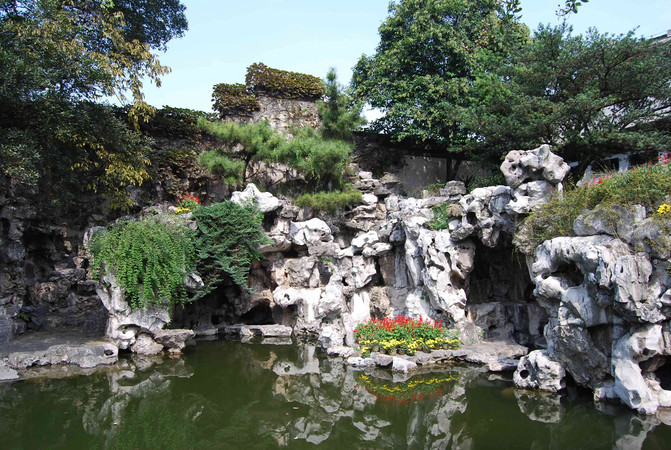
PianshishanfangAlso known as Shuanghuai Garden, the garden is famous for its lake stones. It is an isolated copy of the stone waves, a giant painter in the late Ming and early Qing dynasties. Shi Tao, formerly known as Zhu Ruoji, was an outstanding great painter in the late Ming and early Qing Dynasties in my country. He spent his whole life beating famous mountains and rivers and "searched nearby strange peaks to make drafts". In his later years, he lived in Yangzhou overseas, leaving behind a unique copy of the stone in the world.

moon in the waterIt is a wonder at the rockery and ravines in the stone mountain house. During the day, there is a bright moon in the pool water, and it changes with the viewer's perspective. It was originally a void on the wall behind the stacked stones, which was concealed by the stacked stones depending on the perspective




crescent wall



He family motto

serialized certificate
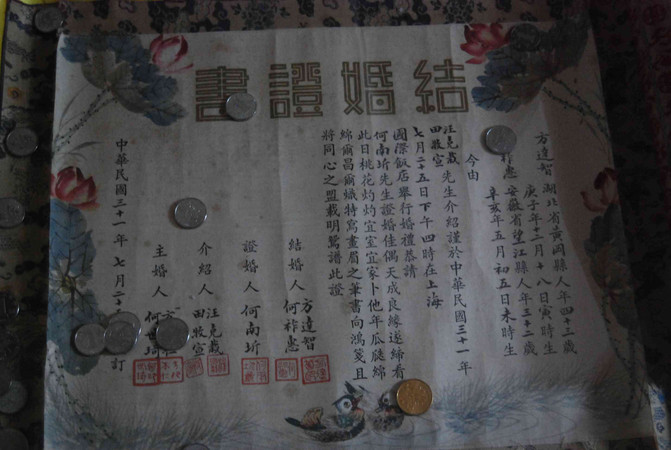



ancient canalWater sightseeing:The Beijing-Hangzhou Grand Canal is the longest man-made river in the world. It runs through the north and south and is a bridge connecting the Chinese nation's more than 2,000 years of civilization. The Yangzhou section of the Canal is the oldest section of the Grand Canal. Stroll along the river embankment from Dongguan Ancient Street to the end to reach the canal







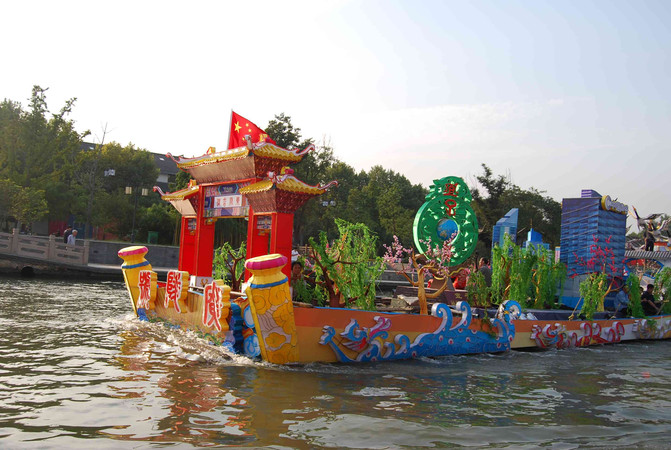




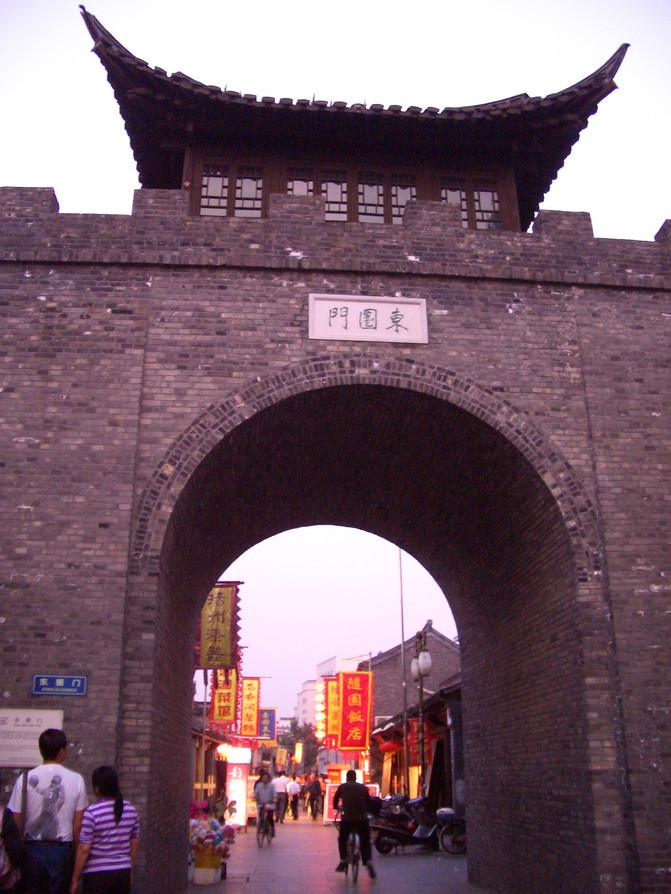

Wenchang Pavilion Built during the Wanli Period of the Ming Dynasty, it is the Kuixing Tower of Yangzhou Prefecture School, hence the name "Wenchang Pavilion"; on festival nights, the colorful lights on the pavilion shine, making it a beautiful sight in the downtown area of Yangzhou.
·Wenchang Pavilion is an octagonal third-level brick-and-wood structure building, similar to the Hall of Praying for Good Years at the Temple of Heaven in Beijing. On the ground floor of the pavilion, there are arches on all sides, which are connected to the street. On the second and third floors of the pavilion, there are virtual windows around the building and overlooking the four directions. You can have a panoramic view of the street scenes far and near.

Yangzhou Eight Eccentrics Memorial HallLocated on the southeast of Slender West Lake, it was transformed from the Western Temple where Jin Nong, one of the eight monsters in Yangzhou, lived in his later years.
The Eight Eccentrics of Yangzhou refer to a group of innovative painters in Yangzhou in the Qing Dynasty, or Yangzhou Painting School. There are different accounts in the history of Chinese painting, which eight painters refer to are: Jin Nong, Zheng Xie, Huang Shen, Li Wei, Li Fangying, Wang Shishen, Luo Pin, Gao Xiang and others

The Daxiong Hall is now the main exhibition hall of the memorial hall. Remember to look up. Most of the beautiful paintings on the beams are relics of the Ming Dynasty. In the center of the hall stands a statue of the Eight Eccentrics of Yangzhou, surrounded by exhibitions, but most of the paintings and paintings are imitations.

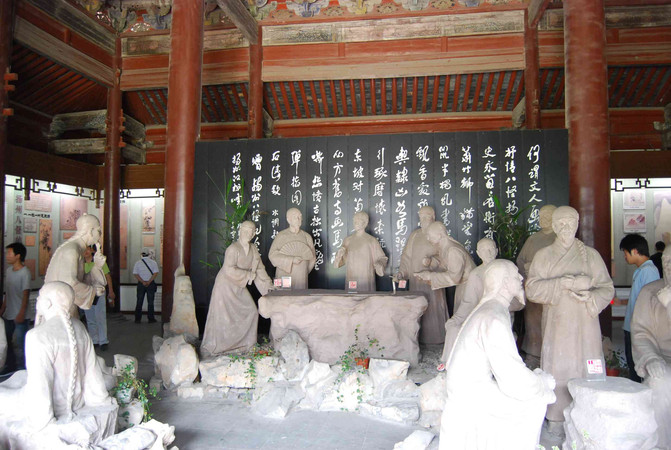


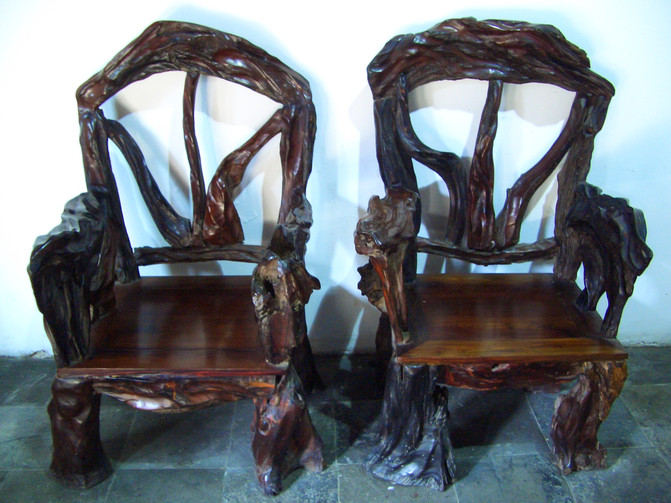


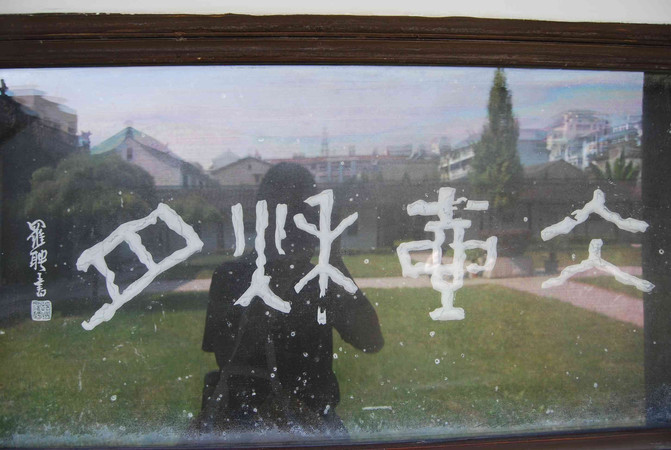

Yangzhou Double Expo HallIncluding the Yangzhou Museum and the China Engraving and Printing Museum. The exterior of the building fully reflects the design concept of the harmonious unity of man and nature, and the integration of architecture and nature.
The first floor of the Yangzhou Museum is an exhibition hall. The second floor is the National Treasure Museum, the Sculpture Art Museum, and the Painting and Calligraphy Museum.

Only one cultural relic is displayed in the entire exhibition hall of the National Treasure Museum-"Treasure of the Town Museum":Yuanji blue glaze plum bottle with white dragon pattern It is 43.5 cm high, 5.5 cm in diameter, 25.3 cm in diameter, and 14cm in diameter. It is the largest, best-shaped, and most completely preserved among the three Yuan Dynasty plum bottles with blue glaze and white dragon pattern surviving in the world. The other two are collected in the Summer Palace in Beijing and the Jimei Museum in Paris respectively).


Summary :
During this long epidemic holiday, I especially enjoyed a peaceful and quiet life at home. I slept until I woke up naturally, planted flowers and grass, drank tea and read books, watched movies, listened to speeches and music, and chatted with friends about life and study when I was bored-I was busy every day. Be at ease and leisurely! Maybe life needs to find passion from past experiences, so collect the footsteps you have taken in the past to review, summarize and reflect on--in fact, every step in the past has become the person you are now!
I am very emotional in my life. I always had some inspiration when I chose my destination city, and then there was a trip that I wanted to leave at will. The same was true for organizing photos. Estonia has never had the right time and the right mood to review it during this period. After the epidemic in the 17th generation, I look back at myself at that time. I sold my house after SAS and prepared to go abroad. At that time, I could do it if I wanted to, be proactive, courageous and fearless--to experience the beauty of life to the fullest. It seems that I am really ignorant now, but now I have lost my enthusiasm for life. I can no longer find the courage to sell my house and do what I yearned for. Instead, I live a simple and plain Buddhist life! In the past, when I was in the countryside, I wanted to go to the city, when I was in the city, I wanted to go abroad, and when I was abroad, I wanted to go back to my country. Now I am in the city, I want to return to my village. It really responds to "I hope you can leave for half your life and still come back as a teenager." I felt annoyed for too long in the city, so I went back to my hometown before Qingming Festival. I also encountered heavy snow in March and stayed there for a rare week. I was very relaxed and comfortable. In fact, deep down, I still lived in the tranquility and peaceful pastoral life of my childhood! Just as the trip to Yangzhou that year was warm, romantic and enjoyable-----
I went to the woods Thoreau
I went to the woods because I want to live deliberately
I went to live deep and suck out all the marrow of life
to put to rout all that was not life --and not ,
when I came to die,discover that I had not lived
Next Article:Buddha worship Mount Putuo, light trip to Yangzhou
